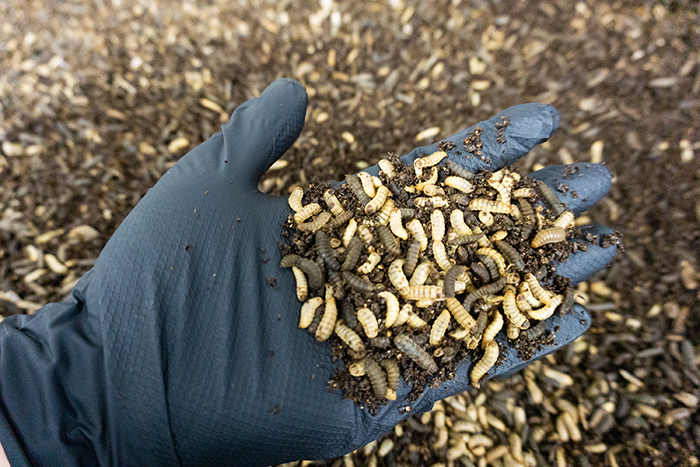
By George Munene
“According to our research, 75 per cent of East Africa’s millers are willing to fortify their feed with insects to reduce their costs while up to 95 per cent of fish and pig farmers are actively looking to bring down their production costs by incorporating insects into animal diets, said Dr. Tanga Chrysantus, Head of ICIPE’s Insects for Food, Feed, and Other Uses (INSEFF) program.
Per ICIPE, in laying chicken, insect-supplemented diets have shown to increase laying life by up to 62 per cent.
Despite this, slightly over 1000 farmers in East Africa are engaged in insect rearing, a number that remains low against existing demand.
“We are closely looking into working on upscaling Black Soldier Fly (BSF) production by small farmers. Incorporating insect protein sources in our feeds we believe will go a long way in decreasing our production costs,” pointed out Tunga Nutrition General Manager Harrison Juma.
In April, South African startup Inseco which uses insects to convert waste food and other organic byproducts into proteins, oils, and fertilizer, raised Sh636.2 million ($5.3M) in funding. This was the largest raised initial capital in South Africa with the company looking to use the funding to increase production capacity.
Related News: Young farmer cuts lucrative niche in offering organic farming solutions
Related News: Kenya waste-to-value company enlisting farmers to earn from black soldier flies
“We found that the demand that we’ve encountered for the products exceeds our capacity to supply the minimum order quantity of some of the larger customers that we’re dealing with,” co-founder and CEO Simon Hazell told AgFunder.
Ecodudu and Insectipro, both based in Kenya, are also upcycling organic waste using insects. Rwanda’s Magofarm produces animal feed ingredients from insects.
According to a recently released Insect Protein Market Size report, the global insect protein market shows great growth potential.
It grew 8.2 per cent year-on-year (YoY) in 2022 securing a valuation of Sh42 billion ($349.2M). It is expected to surpass the Sh100 billion valuation ($838.5M) in 2032 with applications in animal and fish feed as well as food for human consumption.
This insect protein market is also expected to be driven by:
- Rising healthcare and environmental concerns regarding the consumption of traditional animal protein sources.
- High population growth and rising concerns about environmental sustainability as consumption of animal products such as meat, eggs, and milk rises.
This can be ameliorated by the availability of high protein content, minerals, beneficial fats, and vitamins-- around 2,000 bug species are already consumed as part of a regular diet by humans and domestic animals all over the world.
- Rising worldwide awareness of the negative consequences of animal farming is forcing businesses to seek other alternatives. There are many important fatty acids, amino acids, minerals, and vitamins found in insects.
- Cost benefits, production efficiency, and nutritional value supplied by insects.
Related News: Kenya leads charge in emergent million-dollar insect farming business
In global markets, beetles are considered highly nutritious and account for more than a quarter of the market, followed by caterpillars, whose consumption grew 10.2 per cent.
Other profitable bug varieties included grasshoppers, crickets, and locusts.
Europe and North America are expected to account for the largest market share of more than three-fifths of the global insect protein market.
















Comments powered by CComment